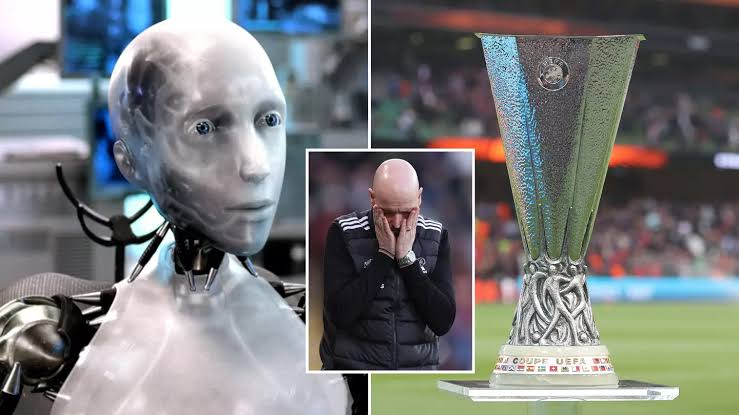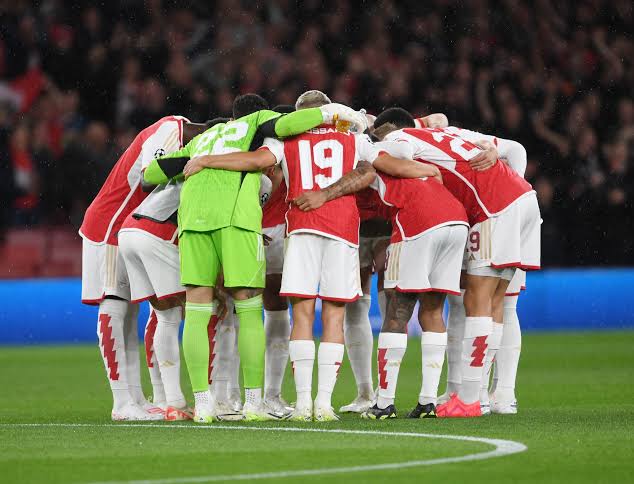Supercomputer Predicts 2025-26 Premier League Table in Full

As the 2025-26 Premier League season approaches, football enthusiasts worldwide are eagerly anticipating what promises to be another thrilling campaign. The English top flight continues to establish itself as the most competitive and unpredictable league in world football, where traditional powerhouses face constant challenges from ambitious newcomers and resurgent clubs determined to upset the established order.
The previous season delivered drama, surprises, and memorable moments that will be etched in football history for years to come. Liverpool’s triumphant return to the summit under Arne Slot’s guidance marked a new chapter for the Merseyside giants, while traditional powers like Manchester United and Tottenham endured campaigns that fell well short of expectations. Meanwhile, clubs like Nottingham Forest captured imaginations with their unexpected European qualification, proving that the Premier League’s competitive nature remains as fierce as ever.
Advanced analytics and sophisticated prediction models have become integral tools in modern football analysis, offering insights into potential outcomes based on current squad compositions, tactical approaches, and historical performance patterns. These technological marvels process vast amounts of data to generate forecasts that, while not infallible, provide fascinating glimpses into possible future scenarios.
Manchester City enters the new season with characteristic ambition and a squad that continues to set the standard for excellence in English football. Under Pep Guardiola’s meticulous guidance, the Citizens have developed a playing philosophy that combines technical brilliance with tactical sophistication, creating a template that rivals struggle to match consistently.
The return of key players from injury and the potential integration of new signings could prove decisive in City’s quest to reclaim the Premier League crown. Their systematic approach to recruitment, focusing on players who seamlessly fit into Guardiola’s tactical framework, ensures that quality and depth remain constant across all positions. The midfield maestro Rodri’s presence anchors their system, while the attacking prowess of Erling Haaland continues to terrorize defenses throughout the league.
City’s strength lies not just in individual brilliance but in their collective understanding of positional play and their ability to adapt during matches. Their possession-based approach, combined with intense pressing when out of possession, creates a suffocating environment for opponents. The club’s investment in youth development and data analytics ensures they remain at the forefront of tactical innovation.
Arsenal’s recent campaigns have been characterized by consistent improvement and a growing belief that their title drought may soon end. Mikel Arteta has methodically constructed a squad capable of challenging on multiple fronts, blending experienced campaigners with emerging talents who embody the club’s attacking traditions.
The Gunners’ approach centers on high-intensity pressing, quick transitions, and clinical finishing in crucial moments. Their defensive solidity has improved dramatically, providing the foundation for sustained title challenges. The addition of quality depth in key positions has addressed previous concerns about squad rotation and injury management during congested fixture periods.
Arsenal’s young core, led by players who have matured through previous title races, possesses the mental fortitude required for championship pursuits. Their Emirates Stadium fortress has become increasingly difficult for visiting teams, while their away form has shown marked improvement. The tactical flexibility demonstrated in recent seasons suggests they are well-equipped to handle various challenges throughout the campaign.
Liverpool’s title-winning campaign under Arne Slot proved that the club’s winning mentality transcends individual managers. The Dutch tactician successfully implemented his vision while maintaining the intensity and commitment that defines Liverpool’s modern identity. However, defending a Premier League title presents unique challenges that test every aspect of a club’s infrastructure.
The Reds’ traditional strengths – their devastating counter-attacks, set-piece prowess, and Anfield atmosphere – remain formidable weapons in their arsenal. Their recruitment strategy focuses on players who understand the club’s high-tempo philosophy and can contribute immediately to their system. The departure and potential arrival of key players will significantly impact their defensive stability and creative output.
Liverpool’s success depends heavily on maintaining the physical and mental intensity that carried them to glory. Their ability to rotate effectively while maintaining performance standards will prove crucial during the demanding winter period. The psychological pressure of defending a championship, combined with increased expectations, presents new challenges for a squad accustomed to chasing rather than being chased
Chelsea’s transformation under their current management represents one of the most intriguing storylines in modern Premier League history. The club’s significant investment in young talent and tactical innovation has created a squad with immense potential but limited experience in high-pressure situations. Their recent Club World Cup triumph demonstrates their capability on the grandest stages.
The Blues’ possession-based approach, emphasizing quick combinations and movement in tight spaces, has shown promising signs of development. Their defensive improvements have provided stability that was often lacking in previous seasons. The integration of new signings with existing talent remains an ongoing process that could yield spectacular results if managed successfully.
Chelsea’s youth movement, while exciting, presents questions about consistency and mental resilience during crucial moments. Their Stamford Bridge fortress has regained some of its former intimidating atmosphere, while their tactical flexibility allows them to adapt to different opponents and situations effectively
Manchester United’s recent struggles have been well-documented, but signs of improvement under their current management suggest brighter days may lie ahead. The club’s commitment to developing a distinct playing identity, combined with strategic recruitment, indicates a long-term vision that extends beyond immediate results.
United’s attacking traditions remain evident in their approach play, but defensive organization has required significant attention. The integration of academy graduates with experienced professionals has created an interesting dynamic that could mature into something special. Their Old Trafford atmosphere, when the team performs well, still ranks among the most inspiring in world football.
The pressure surrounding Manchester United extends beyond normal expectations, given their historical success and global fanbase. However, this environment can also inspire players to reach new heights. Their squad depth improvements and tactical evolution suggest they are moving in the right direction, albeit gradually.
Tottenham’s Europa League triumph provided validation for their recent approach and created momentum for future challenges. Their attacking philosophy, emphasizing pace, creativity, and clinical finishing, has proven effective against various levels of opposition. The development of young talents alongside experienced campaigners has created an exciting blend of enthusiasm and wisdom.
Spurs’ new stadium continues to provide an exceptional matchday experience, but translating that atmosphere into consistent home form remains crucial. Their tactical flexibility under current management has addressed some historical concerns about adapting to different game situations. The pressure to build upon European success while competing domestically presents both opportunities and challenges.
Newcastle United’s transformation since their ownership change has captured global attention, but establishing themselves as consistent European contenders requires sustained excellence. Their recruitment strategy focuses on players who understand the club’s ambitious project while respecting their passionate fanbase and traditions.
The Magpies’ direct style, combined with improved technical quality, has made them difficult opponents for any team. Their St. James’ Park atmosphere remains one of the most intimidating in English football. The challenge lies in maintaining progress while managing expectations from supporters who have endured years of underachievement.
Aston Villa’s recent success demonstrates the potential for well-managed clubs to establish themselves among England’s elite. Their combination of tactical discipline and individual flair has proven effective in both domestic and European competitions. Villa Park’s atmosphere has been rejuvenated by the team’s improved performances and ambitious recruitment.
The club’s challenge involves building upon recent achievements while avoiding the complacency that often affects newly successful teams. Their squad depth improvements and tactical evolution suggest they are serious about sustained success rather than short-term gains.
The three clubs promoted from the Championship face the monumental task of establishing themselves in the Premier League’s unforgiving environment. Historical data suggests that promoted sides face significant challenges in adapting to the increased pace, quality, and intensity of top-flight football.
Leeds United’s return to the Premier League brings with it expectations based on their historical stature and passionate fanbase. Their direct style and commitment to attacking football may serve them well, but defensive organization often determines survival at this level. The psychological pressure of representing such a demanding fanbase adds another layer of complexity to their challenge.
Burnley’s traditional approach to Premier League football emphasizes organization, set-piece prowess, and maximizing home advantage. Their experience in previous Premier League campaigns provides valuable knowledge about survival strategies. However, the league’s evolution requires adaptation and flexibility that may test their established methods.
Sunderland’s passionate support base and rich history provide motivation, but Premier League survival depends on on-field performance rather than emotional factors. Their ability to adapt tactically and maintain confidence during difficult periods will prove crucial. The transition from Championship success to Premier League competitiveness often proves more challenging than anticipated.
Several established Premier League clubs face concerns about their competitive position as the league’s quality continues to improve. Teams that previously felt secure in mid-table positions now find themselves potentially vulnerable to relegation if they fail to maintain their standards.
The financial pressures of maintaining Premier League status affect every aspect of club operations, from recruitment to infrastructure development. Clubs must balance short-term survival needs with long-term strategic planning, often creating difficult decisions about player investments and tactical approaches.
The Premier League continues to serve as a laboratory for tactical innovation, with managers from diverse backgrounds bringing different philosophical approaches to English football. The increasing emphasis on data analytics has revolutionized recruitment, training methods, and in-game decision-making processes.
High-intensity pressing remains prevalent, but teams have developed more sophisticated approaches to energy management throughout matches and across congested fixture periods. The importance of set-pieces has grown significantly, with specialized coaches and detailed analysis becoming standard practices across all levels.
The Premier League’s global appeal attracts talent from every continent, creating a melting pot of playing styles and cultural approaches to football. Young players face unprecedented development opportunities but also intense pressure to perform immediately in high-stakes environments.
The integration of international players has become increasingly sophisticated, with clubs providing comprehensive support systems that extend beyond football training. Language barriers, cultural adjustments, and tactical adaptations all require careful management to maximize player potential.
Advanced prediction models analyze vast quantities of data to generate probability-based forecasts about future outcomes. These systems consider factors including historical performance, current squad composition, injury records, tactical approaches, and fixture difficulty when generating predictions.
While these models provide fascinating insights, football’s unpredictable nature ensures that surprises remain possible. The human elements of motivation, team chemistry, and individual inspiration cannot be fully quantified by any analytical system, regardless of its sophistication
Football’s beauty lies partly in its unpredictability, where David can defeat Goliath on any given day. Prediction models serve as interesting conversation starters and analytical tools, but they cannot account for the countless variables that influence football outcomes
Injuries, managerial changes, transfer market activities, and simple luck all play roles in determining final league positions. The most sophisticated predictions should be viewed as informed estimations rather than definitive forecasts
Football fandom involves deep emotional investment that extends far beyond rational analysis of team capabilities. Supporters’ expectations often reflect historical success, recent performance trends, and optimistic assessments of current squad potential.
The relationship between fan expectations and team performance creates complex dynamics that can either inspire players to exceed their limitations or create pressure that hinders natural expression and creativity.l
Premier League clubs serve as focal points for community identity and pride, particularly in regions where football represents cultural heritage spanning generations. The success or failure of local teams affects mood, economic activity, and social cohesion in ways that extend far beyond the football pitch
The 2025-26 Premier League season promises to deliver the drama, excitement, and unpredictability that have made English football the world’s most-watched league. While prediction models and analytical assessments provide interesting perspectives on potential outcomes, football’s essential appeal lies in its capacity to surprise and inspire.
Every team enters the season with hopes, dreams, and strategic plans designed to achieve their objectives. From championship aspirations to survival battles, each club’s journey will contribute to another compelling chapter in Premier League history.
The beauty of football lies not in predetermined outcomes but in the stories that unfold over ten months of competition. Players will exceed expectations, managers will implement tactical innovations, and supporters will experience the emotional rollercoaster that defines their passion for the game.
As the season approaches, the only certainty is uncertainty. The Premier League will continue to evolve, surprise, and captivate audiences worldwide, proving once again why it remains the pinnacle of domestic football competition. Whether prediction models prove accurate or wildly incorrect, the journey itself promises to be absolutely captivating.














